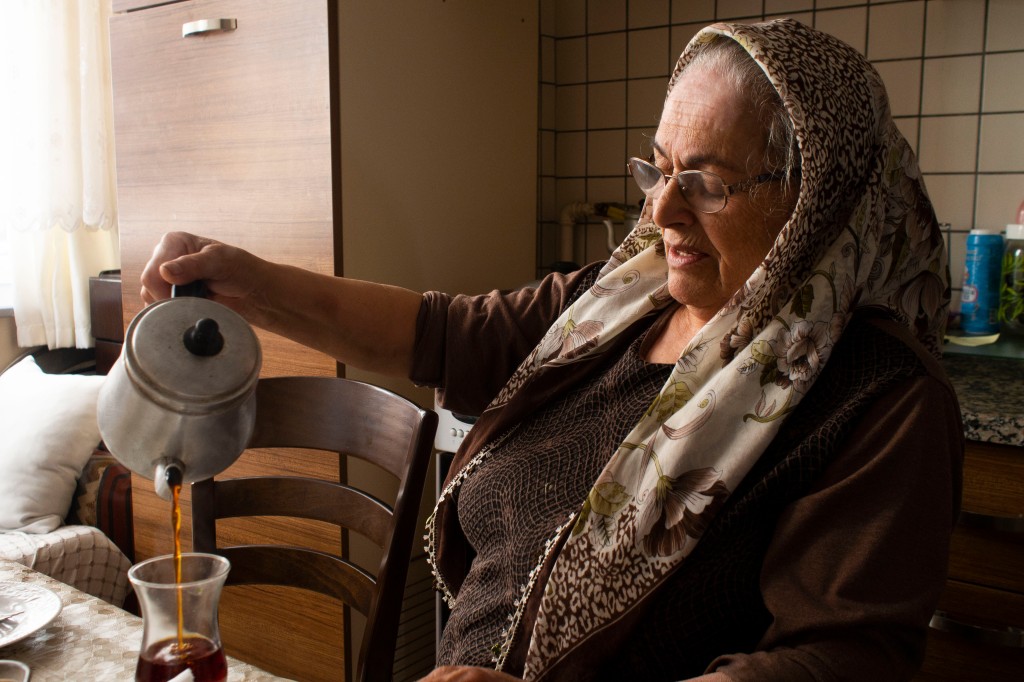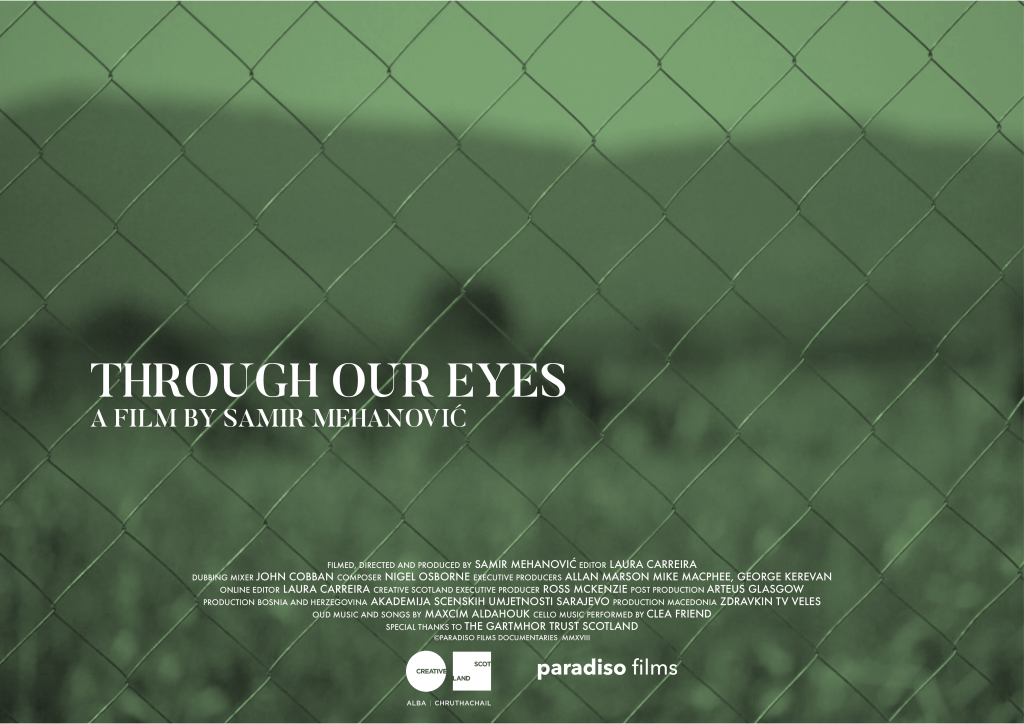Article written by Elsa Gomis.
One might set the beginning of the so-called migrant ‘crisis’ in the Mediterranean to October 3, 2013 when a boat carrying more than 360 people from Eritrea, Somalia and Ghana sank off the coast of Lampedusa island. The crisis reached a peak in the summer of 2015 with massive arrivals of refugees from Syria, and still punctuates the news when a shipwreck causes important causalities. Media treatment of disappearances in the Mediterranean seems to follow the rule of hierarchy of information highlighted by media expert Susan D. Moeller: ‘One dead fireman in Brooklyn is worth five English bobbies, who are worth 50 Arabs, who are worth 500 Africans’ (Moeller, 1999, p. 22). The situation in which the only increasing number of victims appears to deserve consideration in Western news has been qualified by novelist David Lodge as ‘compassion fatigue’, namely as ‘the idea that we get so much human suffering thrust in our faces every day from the media that we’ve become sort of numbed, we’ve used up all our reserves of pity, anger, outrage, and can only think of the pain in our own knee’ (Lodge, 1995, p. 18).
In this context, many artists willing to denounce these tragedies use abandoned objects or items rejected by the sea to embody those who perished. These are often pieces of clothing lost by the wrecked, or humanitarian articles used by NGOs for the rescues. Qualified since 1914 Marcel Duchamp’s Bottle Rack as ‘ready-made’, artworks constituted by the presence of a sole everyday object found their significance in the very gesture of the artist.
For the 52nd edition of Venice international art Biennale, Swiss-Icelandic artist Christoph Büchel exhibited a 22-meters ready-made in the form of a ship. Entitled Barca Nostra (Our Boat), the art piece intends to be a testimony of the 1.100 exiles fleeing Eritrea who lost their lives on board of this ship in April 18, 2015. Recovered in 2016 with the help of Former Italian Minister of Interior Matteo Renzi, the wreckage has been displayed on Venice art venue without any intervention from the artist, except that of its displacement.

The piece caused controversy for two opposite reasons.
First, supporters of successor of Matteo Renzi, the new Minister of Interior Matteo Salvini, denounced Italian State contribution for the ship retrieval and called for the refund of the expenses incurred (Gautheret, 2019). Second, other observers stressed the hypocrisy of the artistic gesture, which under the pretence of alarming opinion on dire situation in the Mediterranean, constitutes provocation and disrespect to the memory of the victims. For example, journalist Lorenzo Tondo titles one article This ‘art’ makes me feel uneasy (2019) and regrets social context of presentation far too distant from the audience to whom it should be addressed:
‘Büchel’s decision risks creating yet another celebration of the nostalgia of tragedy without a corresponding act of conviction in the present; it is simply too distant from those towards whom its message should be directed. I imagine throngs of people – well-dressed, sipping spritzes – in front of a boat that, to me, is a coffin which held 700 people. I imagine their gaze fixed on the boat’s faded paint, the same hue as the Venetian sky. I think about the 28 survivors of the sinking, and what they would have given for just one second of that attention’.
What feeds this feeling seems to be the absence of comments from the artist. From the reading of the catalogue of the Biennale, there is no doubt about Büchel’s intention to pay tribute to the disappeared and to denounce European migratory regimes, since Barca Nostra is described as ‘a collective monument and memorial to contemporary migration […] not only dedicated to the victims and the people involved in its recovery, but also represents the collective policies and politics that create these kind of disasters’ (Rugoff, 2019, p. 60). For his part, the artist did not wish to explain his approach, and no label identifies the ship as part of the exhibition in the harbour. Observers noticed that this mediation choice had the consequence to make the vessel invisible to passers-by and so, to render even more anonymous countless victims of the tragedy. For instance, artist Augustas Serapinas noted that many VIPs, ‘in their rush to see the show, blew right past the ship’ (Pes and Rea, 2019).
It seems that if scenographic installation around Barca Nostra fails to the ‘invitation to silence and reflection’ (Tondo, 2019) called for by the President of the Biennale, it would have succeeded in producing ethical debate questioning the borders between aesthetics, activism and cultural consumption. Two series of factors can explain this pitfall.
First, nearly total absence of accompanying commentary does not hide the underlined message that is delivered by the art piece. Aesthetic endeavour and the search for forms of representation of said fatalities takes the shape of a huge ready-made. Yet, if Marcel Duchamp recognised, at the end of his life, that he had ‘never been able to come up with a definition or explanation that fully satisfies’ [him]; he also acknowledged that ready-made aimed ‘to achieve something of such indifference that you don’t have any aesthetic emotion’. The work of Duchamp is known to escape explanations, to gamble on chance and to follow the logic of a ‘disregard for the argument’ (Breton, 1969, p. 121). If Büchel did not specify explicitly the relationship of his work to migratory displacements, the ship he exhibited is that in which perished hundreds of exiles. It was chosen by Büchel because it was this specific boat, not any boat. The title he gave to the piece, Barca Nostra, refers directly to Mare Nostrum, Our Sea, Latin name for the Mediterranean. This relationship connects obviously with contemporary disappearances at sea, or even, as pointed by determiner ‘Nostra’ (Our), to a collective responsibility with regard to the latter. The boat therefore bears a determined artistic gesture. Yet, if Duchamp’s, Bottle Rack or Fountain offer polysemic readings from free poetic act to a critique of consumer society, Barca Nostra imposes commiseration and contemplation. Paradoxically, the existing memory and symbolic charge carried by the boat, as a disastrous vehicle for those who perished offshore Libyan coasts, are not directly redirected to the boat as an art piece on Venice Biennale venue. Although not explicitly stated, Büchel’s gesture does not succeed neither in elevating the boat to the status of memory-based, nor to that of an art object. On the contrary, it relegates it the rank of any old boat on the Venice harbour.
Duchamp searched for indifference and achieved meaningful artwork, while Büchel sought for awareness and obtained feelings of rejection from both opponents and supporters of exiles. Processes of denunciation and compassion are reduced to what Jacques Rancière calls ‘the commodity law of equivalence’ (2009, p. 29). Rancière’s law of equivalence is determined by globalised market forces that standardise differences and unifies peculiarities into simplified versions of reality, easier to memorise for consumers-viewers in the days of digital propagation of contents. It is in this reifying context, in which hierarchy of information seems to be patterned on social hierarchy, that evolve today both images and exiles. Human objectification produced by the system of information thus not seem to be conjured by the exhibition of objects. For Rancière, the compassion fatigue syndrome is due to the perpetuation of processes of anonymisation:
‘If horror is banalised, it is not because we see too many images of it. We do not see too many suffering bodies on the screen. But we do see too many nameless bodies, too many bodies incapable of returning the gaze that we direct at them, too many bodies that are an object of speech without themselves having a chance to speak’ (2009, p. 96). Paying tribute to victims of disappearances in the Mediterranean does not involve materialising them through objects but attempting to give them a face.
Bibliography
Breton, A. (1969), « Marcel Duchamp », in Les Pas perdus, Paris: Gallimard, 1969.
Duchamp, M. (1967) interviews with Pierre Cabanne in Marcel Duchamp, ingénieur du temps perdu, Paris: Belfond, 1997.
Gauteret, J. (2019) ‘Arts : à la Biennale de Venise, « Barca nostra » en hommage aux migrants morts en mer’, Le Monde, 10 May 2019, https://www.lemonde.fr/culture/article/2019/05/10/arts-a-la-biennale-de-venise-barca-nostra-en-hommage-aux-migrants-morts-en-mer_5460650_3246.html [Accessed 29 October 2019]
Le Brun, A. (2018) Ce qui n’a pas de prix, Paris: Stock.
Lodge, D., (1995) Thérapie, Paris: Payot & Rivages.
Moeller, S. D. (1999) Compassion Fatigue: How the Media Sell Disease, Famine, War and Death, London: Routledge.
Tondo, L. (2019) ‘I have seen the tragedy of Mediterranean migrants. This ‘art’ makes me feel uneasy’, The Guardian, 12 May 2019 https://www.theguardian.com/world/2019/may/12/venice-biennale-migrant-tragedy-art-makes-me-uneasy [Accessed 29 October 2019]
Pes, J. and Rea N. (2019) ‘Absolutely Vile’ or ‘Powerful’? Christoph Buchel’s Migrant Boat Is the Most Divisive Work at the Venice Biennale’, artnet’news, 16 May 2019, https://news.artnet.com/art-world/barca-nostra-1548946 [Accessed 29 October 2019]
Rancière, J. (2009) The Emancipated Spectator, New York: Verso.
Rugoff, R. (ed.) (2019) May You Live in Interesting Times. Catalogue of the 58th International Art Exhibition, Venice: La Biennale di Venezia.
Elsa Gomis is an early-career researcher and artist based in Oxford. At the nexus between art and Refugee Studies, her Critical Ph.D. by Practice deals with representations of exile in the Mediterranean. She is Editor of the section ‘In Images’ in journal De Facto of The Institute Convergences Migrations, Paris.






Leave a comment